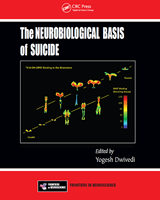
“Objective: To document the prevalence and correlates of suicidal ideation (SI) among individuals seeking cannabis-based medicinal products (CBMPs); to test whether SI declines or intensifies after three months of CBMP treatment and to document 12-month trajectories of depression in those reporting SI and other patients.
Method: Observational data were available for 3781 patients at entry to treatment, 2112 at three months and 777 for 12 months. Self-reported depressed mood and SI were assessed using items from the PHQ-9. Additional data included sociodemographic characteristics and self-reported well-being.
Results: 25% of the sample reported SI at treatment entry and those with SI had higher levels of depressed mood (mean = 17.4 vs. 11.3; F(1,3533) = 716.5, p < .001) and disturbed sleep (mean = 13.8 vs. 12.2, F(1,3533) = 125.9, p < .001), poorer general health (mean = 43.6 vs. 52.2, F(1,3533) = 118.3, p < .001) and lower quality of life (mean = 0.44 vs. 0.56 (F(1,3533) = 118.3, p < .001). The prevalence of SI reduced from 23.6% to 17.6% (z = 6.5, p < .001) at 3 months. Twelve-month follow-up indicated a substantial reduction in depressed mood with this reduction being more pronounced in those reporting SI (mean (baseline) = 17.7 vs. mean (12 months) = 10.3) than in other patients (mean (baseline) = 11.1 vs. mean (12 months) = 7.0).
Conclusions: SI is common among individuals seeking CBMPs to treat a range of chronic conditions and is associated with higher levels of depressed mood and poorer quality of life. Treatment with CBMPs reduced the prevalence and intensity of suicidal ideation.”
https://pubmed.ncbi.nlm.nih.gov/39045855/
“Treatment with CBMPs reduced the prevalence and intensity of suicidal ideation”
https://www.tandfonline.com/doi/full/10.1080/13811118.2024.2356615

 “Post-traumatic stress disorder sharply increases the risk of depression and suicide. Individuals living with post-traumatic stress disorder frequently use cannabis to treat associated symptoms.
“Post-traumatic stress disorder sharply increases the risk of depression and suicide. Individuals living with post-traumatic stress disorder frequently use cannabis to treat associated symptoms. “Combat veterans are at elevated suicide risk. The goal of this study was to test the hypothesis that combat veterans who have made a suicide attempt post-deployment can be distinguished from combat veterans who have never made a suicide attempt based on differences in psychological and biological variables. For the latter, we focused on endogenous cannabinoids, neuroendocrine markers that are associated with stress. Demographic and clinical parameters of suicide attempters and non-attempters were assessed. Blood samples were assayed for anandamide (AEA), 2-arachidonoylglycerol (2-AG), and cortisol. Suicide attempters had higher Scale for Suicidal Ideation (SSI) scores in comparison to non-attempters. Controlling for gender, 2-AG levels were higher among suicide attempters in comparison to non-attempters. Cortisol levels positively correlated with 2-AG levels and negatively correlated with SSI scores among non-attempters but not among attempters. AEA levels negatively correlated with SSI scores among attempters but not among non-attempters. Our results indicate that there are psychological and biological differences between combat veterans with or without a history of suicidal attempt. Our findings also suggest that clinically observed differences between the groups may have a neurobiological basis.”
“Combat veterans are at elevated suicide risk. The goal of this study was to test the hypothesis that combat veterans who have made a suicide attempt post-deployment can be distinguished from combat veterans who have never made a suicide attempt based on differences in psychological and biological variables. For the latter, we focused on endogenous cannabinoids, neuroendocrine markers that are associated with stress. Demographic and clinical parameters of suicide attempters and non-attempters were assessed. Blood samples were assayed for anandamide (AEA), 2-arachidonoylglycerol (2-AG), and cortisol. Suicide attempters had higher Scale for Suicidal Ideation (SSI) scores in comparison to non-attempters. Controlling for gender, 2-AG levels were higher among suicide attempters in comparison to non-attempters. Cortisol levels positively correlated with 2-AG levels and negatively correlated with SSI scores among non-attempters but not among attempters. AEA levels negatively correlated with SSI scores among attempters but not among non-attempters. Our results indicate that there are psychological and biological differences between combat veterans with or without a history of suicidal attempt. Our findings also suggest that clinically observed differences between the groups may have a neurobiological basis.” “In the current study we use a synthetic control group design to estimate the causal effect of a medical marijuana initiative on suicide risk.
“In the current study we use a synthetic control group design to estimate the causal effect of a medical marijuana initiative on suicide risk.




